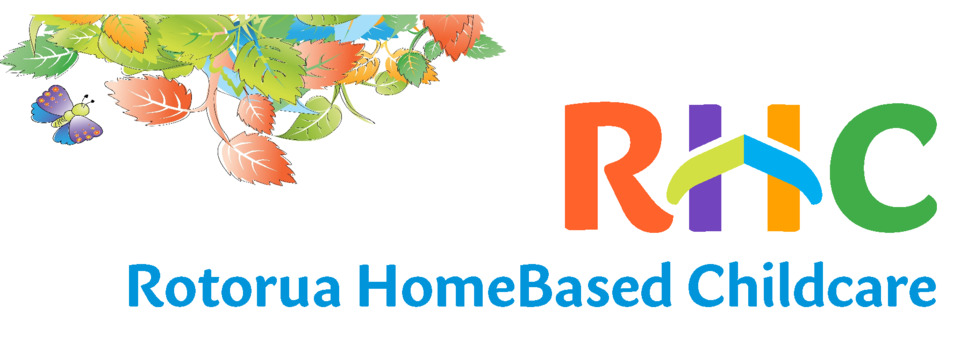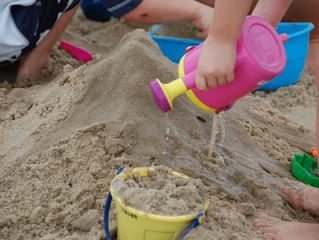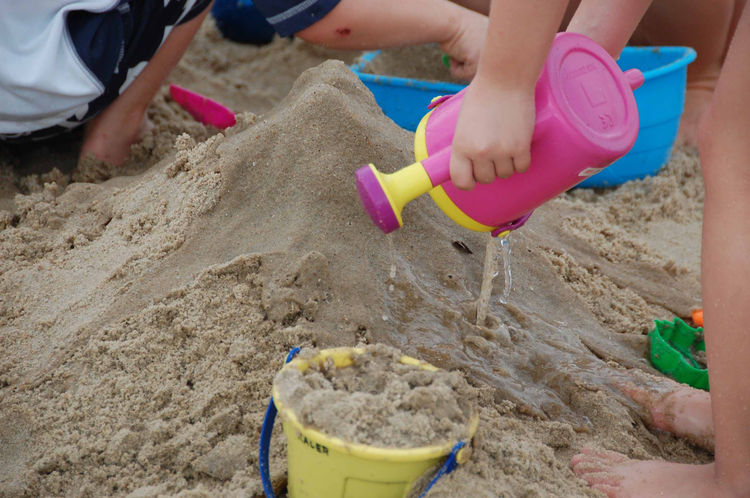Healthy child development requires challenges to their creativity and imaginations as well as to their bodies to achieve optimal sensory and motor development. The sensory stimulation and the development of posture and coordination achieved through physical play will help build the foundation skills for your child's reading and writing.
Development naturally starts as little ones move from a whole fist grasp to picking up food with their thumb and finger. Encourage this development of fine motor skills used in holding pens and pencils by looking for toys that can be shaken, twisted, turned and stacked.
Play with water and sand is also great for developing flexibility and movement with your pre-schooler's hands. Digging in sand, they are using all their fingers and hands, strengthening the muscles needed for writing.
When you read, your eyes need to learn to track the words on the page while keeping the head still. Physical play like being on a see-saw, a trampoline or a swing will help the eyes and brain to work together and focus. Children learn to coordinate their moving body while still looking at their surroundings.
Hand eye coordination is important for copying words onto a page. For under 5s, gardening, cooking or learning to use a hammer and nails with you is a fun way to enhance physical motor development and hand eye coordination by doing something together.
At Rotorua Home Based Childcare, we recognise the value of physical skills during the early years and encourage children to be physically active, in preparation for their reading and writing development



